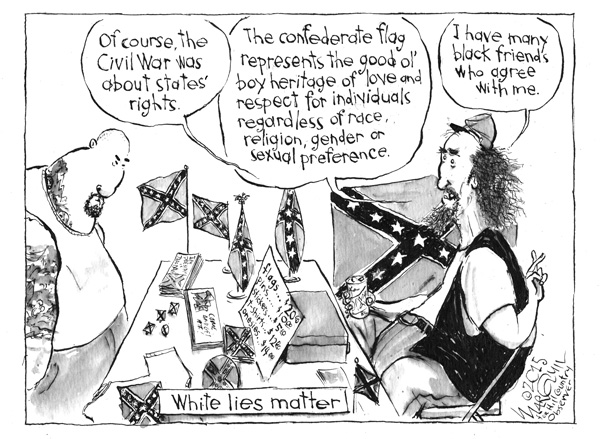Editorial December 2015-January 2016
E D I T O R I A L
Confederate battle flag has no place at the fair
 At first blush, New York’s Washington County seems about the most unlikely place for anyone to be flying the Confederate battle flag.
At first blush, New York’s Washington County seems about the most unlikely place for anyone to be flying the Confederate battle flag.
After all, this is the North. In the Civil War, hundreds of men from Washington County (along with hundreds more from every neighboring county) fought to preserve the Union and end the institution of slavery. At least 167 men from southern Washington County died in the war, and the descendents of many of their families still live here. Just a few generations ago, anyone flying the rebel flag in these parts would have been considered a traitor.
And despite what even Abraham Lincoln claimed at first, ending slavery was surely on the minds of many local men who fought in the Civil War. Washington County was a center of the abolitionist movement, and a network of local people had been working for many years before the war to help Southern slaves escape to freedom in Canada. Greenwich and Easton were major stops on the Underground Railroad.
In the decades since the Civil War, white Southerners have flown the Confederate flag with a variety of motivations -- sometimes to honor the war dead, sometimes to assert racial superiority, sometimes as a supposedly race-neutral proclamation of regional pride, and often as a statement of defiance against the North and its values.
Among blacks, however, the flag still is almost universally seen as a symbol of the South’s old order of slavery and oppression.
Lately the flag has been disappearing even in the South. When a gunman massacred nine black churchgoers in Charleston, S.C., in June – and when police identified the shooter a white supremacist who had posted online photos of himself with a Confederate flag – the reaction was swift.
Within weeks, South Carolina and Alabama had removed statehouse displays of the flag, Virginia recalled license plates bearing the flag, and other states were discussing similar actions. In South Carolina, a crowd of thousands, white and black, turned out at the State House in July to watch the flag lowered for the last time. “Take it down,” they chanted.
So it was all the more disturbing in August to see the rebel flag prominently displayed here by some vendors at the Washington County Fair – and at a roadside stand just down Route 29 from the fairgrounds in Easton. If the vendors’ claims are to be believed, sales of the flag were brisk.
Are there really that many transplanted white Southerners in this region who want to show off their pride? Or are the flag’s buyers making some darker statement?
Either way, as our cover story this month details, several local citizens have asked the board of the Washington County Fair to prohibit sales of the Confederate flag at next year’s fair. It shouldn’t be a hard decision.
Yes, if people want to fly the Confederate flag at home or display it on their vehicle, the First Amendment protects their right to do so, no matter how convoluted their reasoning. And rest assured that those who wish to fly the flag will always find a place to buy one. But the Washington County Fair, as a private organization dedicated to celebrating local agriculture, isn’t obliged to help them.
What the fair board now knows, if it didn’t already, is that the Confederate flag is abhorrent to many local people, white and black. It should do the right thing: Take it down.

